Interview with Winners of the "ADF Milano Salone Design Award 2022" Part.1
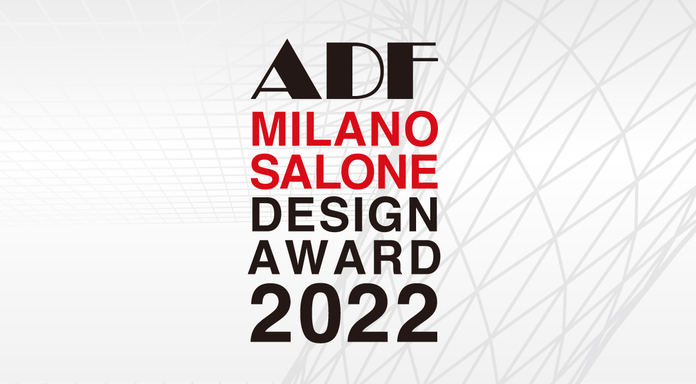
Interview with Winners of the "ADF Milano Salone Design Award 2022" Part.1
We would like to introduce Futa Kobayashi and Gaurav Wali /Yashika Munjal who won the Outstanding Performance Award at "ADF Milano Salone Design Award 2022" hosted by NPO Aoyama Design Forum (ADF).
First of all, we would like to introduce Futa Kobayashi.
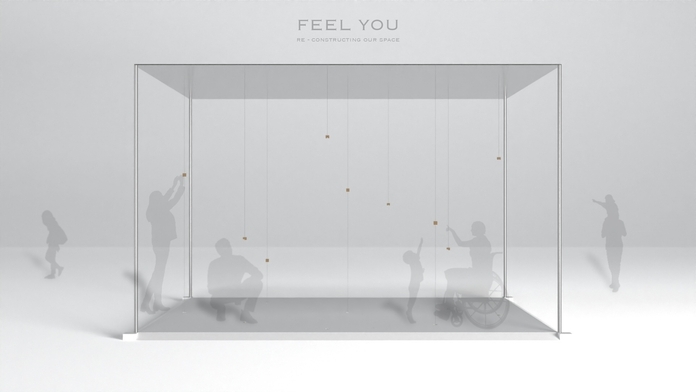
1. Biography
2001 Born in Nagano Prefecture
2022 Matriculation in the Department of Architecture, Faculty of Urban Environment, Tokyo Metropolitan University - Current
2. Your design ideas and policies
My thoughts and strategies are not yet fixed. Every time I come into contact with different works and ways of thinking, I think "Indeed" and my thoughts fluctuate. I want to find something that is important to me as my thoughts fluctuate. When I think about it, I want to value words above all. Considering the weight of the person who saw the work and what I want to convey when I read the title and description of the work, it is difficult to convey both with a comfortable weight, and I think that balance is important. elevate.
3. How did you know about ADF?
I found this award from the information site for competitions.
4. What do you think about the Milano Salone Design Awards?
I find it attractive that the jurors are multinational, regardless of age or nationality, and that themes and proposals that can be interpreted in different ways are free. Moreover, because the maximum number of proposals is large and the review period is long, I was able to express my thoughts thoroughly, and I was glad that each of our project submissions was carefully considered. We would like to express our sincere gratitude for having had a valuable experience and the opportunity to learn.

5. Thoughts on the winning work
The concept is "reimagining our space". Human beings are sensory beings and unconsciously build their own human scale. For example, if people do not collide when they pass each other, it is because they unconsciously sense each other's human scale.
Gravity affects objects, so we can physically sense the bottom of objects. However, what we really sence is the top of the object, and I thought we could sence the sign of the object in the empty air at the top.

I did this work because I want everyone to consciously feel the unconscious sense that spills over in everyday life with the two elements of point and line. When you connect a certain point, it becomes the point of view of some people. The dots connect the lines, and the width of line to line is a comfortable distance for someone. I thought that the feeling that I myself could not digest would give me the opportunity to think about a certain person and see the world from a different perspective. I hope that through the repetition of destruction and construction, visitors will create their own space and feel the sense of incongruity at a certain moment and a little comfort in it.
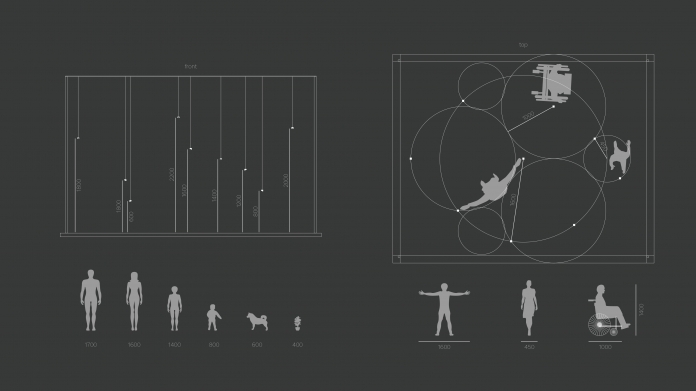
6. About the award
I would like to express my sincere gratitude to the organizers of the ADF Milano Salone Design Award 2022 and the four judges who evaluated our works. Thank you to everyone who supported this award. People who make my daily life easier, people who make me think about different things, and people who think about different things. Thanks to many people, I was able to perceive various things and succeeded. Thank you very much. As the title of the work "feel you" suggests, I hope that this work will give you the opportunity to think about someone.
7. How will it change after Covid-19?
Through the influence of Covid-19, I realize how important it is to meet people every day. Since I rarely have the opportunities, when I do meet someone, I can be honest with them and vividly remember those memories. I hope that after the pandemic, the important feelings that I took for granted and that I have come to understand again with the Covid-19 will be something that can be communicated normally and not something special.
8. Can the power of design change the world ?
I do not know if design is dominant enough to change anything. I think there are designs that change and designs that do not change, even before and after changes in the environment. But each design fits into life at that time, and life is covered with design. So I think it is a close relationship rather than a change.
9. Future dreams
Since I started doing works, I see life from different perspectives. Therefore, I believe that the number of moments when I feel happy in my daily life has increased. I put myself in different environments, meet people, think and create. I would like to continue such a daily life.
Magnus Gustafsson, who highly praised Futa Kobayashi's work, gave a general review as follows.
°»Futa Kobayashi's project is highly communicative as it invites visitors to interact with the given environment, while changing its appearance through connecting with people inside the same space. The space is re-BORN and re-BUILT everytime a person connects dots to create lines and it is this funcionality that attributes originality to the project. With these features, the project reflects the ADF Salone Award's brief. While the Japanese wood joints are an interesting reference to the designer's origins, any type of connection might be applied to this installation, to further emphasise its conceptual spirit, potentially also by using re-CYCLED or re-USED materials°….
Piet Boon also evaluates as follows.
"This entry is an interesting way to allow visitors to reconsider the space around them through the interlocking of objects from different points. It encourages users to reconsider the feasibility of object placement based on different heights and physical abilities. It also offers a myriad of possibilities to recreate aesthetics and functionality of a given space. Each visitor is an agent of design in the space. The communication space encourages information exchange between familiars and strangers alike. It is a unique consideration of architecture and interior design as a mobile, agile structure that accommodates itself to the needs of users. "
Next, we would like to introduce Gaurav Wali.
1. Biography
Gaurav Wali and Yashika Munjal are a design duo from India influenced by the experience of mundane objects. Their practice exists within the fields of product design, craft, and material research. Working against design°«s °∆monoculture°«, they want to bring about a new perspective on the way we understand design.
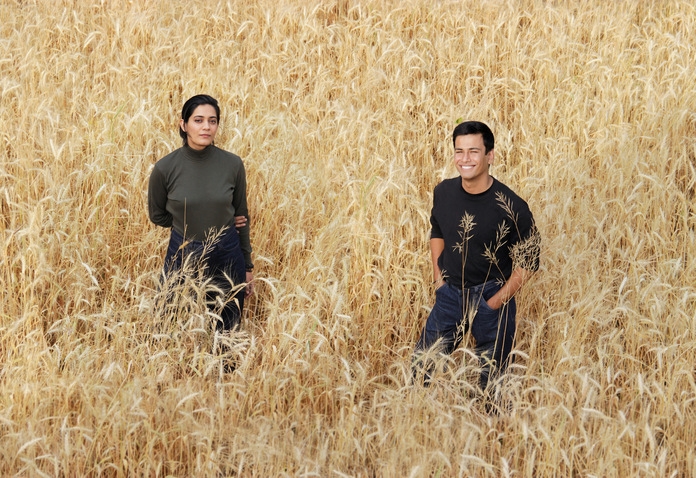
2. Your representative work
Outside/Inside are a series of objects that play with the concept of °∆vessel°«, time, and the norms of product design. In our understanding, the sensibilities regarding objects have matured to a point where they can no longer be perceived without certain presumptive restrictions. With this in mind, we started our thought experiment with the most fundamental object – a vessel. We asked ourselves: °∆What do you understand as a °∆vessel°«? What image comes to mind if I tell you to describe it? Now, how far can you stretch that image? How far is too far?°«
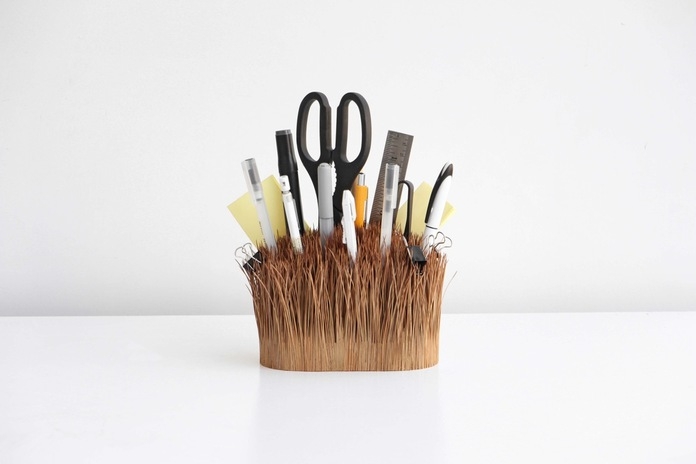
Instead of °∆designing°« we wanted to capture the natural properties of pine needles to bring new value to a familiar object. Using the material as it is, Outside/Inside°«s free-flowing form inspires the user to come up with their own interpretations of using the object – striking a sense of curiosity and rediscovery.
Please feel free to have a look at ourprojects
3. About your policy
We have a very slow design process. For us, new ideas cannot be generated on a deadline. Ideas are serendipitous; they should be allowed to flow naturally and take a shape of their own. The reason why we like to spend time with whatever project we undertake.
Observation and exploration are the keystones of our practice. We believe, having patience while observing reveals a lot of things. You will start to notice these lines and contexts would click together and everything starts to make sense. This can never happen on a deadline.
We usually don°«t sketch, contrary to what you would expect from product designers. But it isn°«t much of a stimulus for us. Although we do line drawings that end up looking like diagrams or complete scribbles.
There is a lot of trial and error in our practice. That means only two out of a hundred things will work for us (if we are lucky). Sometimes ideas can leave us stranded and we have to abandon them mid-way. But what we have realized through these experiences is that you have to °∆keep on keeping on°«.

4. How did you find ADF?
We came to know about ADF through social media of the past winners of the award – Takuto Ohta and Boey Wang
5. What did you think about this award?
We think what ADF Award is doing is trying to define what will be next forefront of design by asking the relevant questions through their theme. It is challenging the old structures of dogma to redefine design in the era of technology, the pandemic, and climate change.
The entries that emerge from those briefs help articulate the future of design into a tangible reality. They provoke thought and help us expand our common understanding of design".
6. Your thought about this project
With Outside/Inside we wanted to capture the essence of living in the foothills of the Himalayas into a single object – the smell of pine forests, the sound of leaves brushing against one another in a gentle breeze, how random things always get stuck in nearby brooks and most importantly, the ephemeral beauty of the seasons.
We wanted this project to act as a breath of fresh air for the design industry environment that is made dense from 3D product renders.
7. About winning this award
It has been an absolute honour for us to see our work being selected amongst the winning designs. For young designers like ourselves, our work being acknowledged by an international platform like ADF encourages us to further pursue our passion with more confidence and dedication.

8. How do you think about the future of the design industry after COVID
The pandemic has forced us all to a standstill and has made up re-evaluate our ways of being. We have collectively come to understand that what we know is not all. We cannot say for sure how it will affect the design industry in the long run but it will take us a long time to get back to the °∆normal°« we once knew.
9. Do you think the world can change by the power of Design?
To answer it plainly, YES. We think that Design is a very powerful tool to reassess the necessities of the times we live in. It can simplify complexities, identify problems, and resolve issues that go to the root of many problems that a generation inherits with the world it leads. These problems are getting more and more intricate and convoluted since we are grappling with serious issues like climate change, global pandemic, and individual isolation. We are looking towards a future that looks nothing like our past. It is time to correct the cyclic redundancy of Design and reassess our priorities so that Design can create a new language of deliberate and considered consumption. We, as designers and artists are at the forefront of engaging with the world and it is imperative that our work becomes conscious of its own value in building a better future.
10. What is your dream?
To create something pure and undisputedly profound that surprises even us and something that takes your breath away.
The judges's comments on Gaurav Wali's work are as follows.
KOTA BANDO:
"I really like the simple shape that bring out the characteristic of the material. It's not only a sophisticated small Art by itself, but also it acts as a stand. I found it is interesting that as soon as you place other objects such as flowers or stationeries on it, it becomes scenery that makes the added objects look deferent and more meaningful. It is great that you can enjoy the change over time. "
Eric Clough°ß
"I appreciated this on many levels - the photography and graphics presented were clear and well branded. The sense and smell of the pine needles practically jumped off the screen and everything felt very delicate and precise. There was thought put into the 'time' or lifespan of the object - how it might feel when the needles were freshly picked or withered and dried. Whether this held objects or simple plant decor, the simplicity of this held my attention to bring the forest's floor into a fun (but admittedly, maybe temporary) product design for any table surface in the house".
The next article will be an interview with Lisa Ogawa / Tomomi Kawashima who won the Excellence Award. Please look forward to it!
